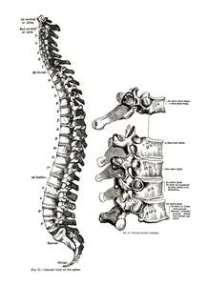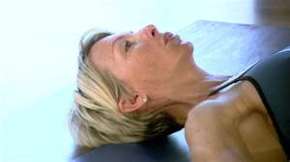
The Spine:
The human spine is composed of 26 individual bony masses, 24 of those are bones called vertebrae. The vertebrae are stacked one on top of the other and form the main part of the spine running from the base of the skull to the pelvis. At the base of the spine, is a bony plate called the sacrum which is made of 5 fused vertebrae. The sacrum forms the back part of the pelvis. At the bottom of the sacrum is a small set of 4 partly fused vertebrae, the coccyx or tailbone. Adding the fused and partly fused bones of the sacrum and coccyx to the 24 vertebrae, the spine has 33 bones all together.
The spine is labeled in 3 sections: the cervical spine, the thoracic spine and the lumbar spine. Starting from the top there are 7 cervical vertebrae, 12 thoracic vertebrae, and 5 lumbar vertebrae.
Neutral Spine:
Neutral spine is the natural position of the spine when all 3 curves of the spine — cervical (neck), thoracic (middle) and lumbar (lower) — are present and in good alignment. This is the strongest position for the spine when we are standing or sitting. Knowing how to find the neutral spine position is crucial for doing many Pilates exercises correctly.
The Basic Move:
Basic Position Lie on your back with your knees bent and your feet flat on the floor. Make sure that your legs are parallel with your heels, toes, knees, and hips all in one line. Let your arms rest at your sides.
Relax Relax your body, including your shoulders, neck, and jaw. Allow your back to rest on the floor, without effort. Your rib cage is dropped with the lower ribs released to the floor as well.
Breathe Deeply Bring your breath all the way into your body, allowing it to move into your back and the sides of your rib cage, and all the way down to the pelvis.
Pelvic Tilt Exhale and use your abs to press your lower spine into the floor in a pelvic tuck. Inhale to release.
Exhale and pull your lower spine up, away from the floor creating a pelvic tilt. Inhale to release.
Many people habitually have their spine in one of these two positions, tucked or tilted. To be in neutral spine, you want to be in between these positions, with the lower abs flat and just a slight, natural curve of the lower spine off the floor. Use the following image to establish neutral spine.
Balanced Pelvic Placement Imagine that there is a cup of water sitting on your lower abdomen, just a couple of inches below your belly button. Allow your abdominal muscles to drop in toward your spine, making your belly flatter. Remember that you don’t want the water to spill, so your pelvis cannot be tipped forward or tucked under.
Body Scan You should now be relaxed with your body in a balanced alignment on the floor. Your breath is deep and full, and your abdominals drop toward the floor. The natural curves of the neck and lumbar (lower) spine, however, are away from the floor. Be sure that your lower spine is not pressed into the floor. That would be a pelvic tilt.
Sarah Penicott
Personal Trainer & Pilates Instructor
www.master-fitness.co.uk
sarah@master-fitness.co.uk
Filed under: PILATES | Leave a comment »







